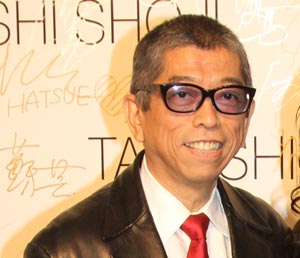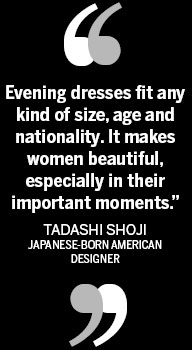

When Spencer attended the Golden Globe Awards in 2012, the actress was relatively unknown. She chose to wear a dress from Tadashi Shoji for the event.
"At that time, nobody helped her to dress, but we didn't (refuse her). So every time she appeared on the red carpet, the dress was my creation," Shoji says.
Spencer attracted greater attention when she was nominated for an Oscar. After that, many designers sent her sketches, asking her to wear their designs to attend the awards.
"But she stuck to me. That is very rare in Hollywood. You know, this fashion or movie industry, after all, is very " the 65-year-old trailed off.
He tries his best to know the wearer, which helps him to create.
"Octavia is not like some young celebrity who suddenly became famous, and then lost their mind and became big she is not young. She is more seasoned," the designer says.

So he chose pure and elegant colors and simple styles, but decorated with rich details. For the 2012 Oscars, Shoji created a hand-beaded, ivory silk and tulle draped cap sleeve gown for her. For the 2013 Oscars, the designer created an ethereal champagne-colored dress.
Why is Shoji so obsessed with the evening dress?
"Evening dresses fit any kind of size, age and nationality. It makes women beautiful, especially in their important moments, like weddings and awards. If my dress is helping them, I am happy with that," Shoji says.
As the designer is Japanese-born, will he add some "Oriental designs" to those dresses for Hollywood's red carpets?
"I meet this question frequently, but actually I don't know. I can't define myself what part is Asian and what part is Western," he says.
Shoji admits he has seen the rise of Japanese designers in the world's stage, like Yohji Yamamoto and Rei Kawakubo. Shoji felt they have some "Japanese-ness" in their designs that he does not.
"I was not trained and educated in Japan. I started my career in the US, especially in Los Angeles. You can feel Hollywood (in my creations)," he says.